By Kyle Proffitt
April 11, 2025 | The 2025 International Battery Seminar and Exhibit included the third iteration of a Battery Venture, Innovation & Partnering event. The day-long event included senior-level investors, corporate executives, entrepreneurs, and start-up leaders across the battery space and was marked by several intimate panel discussions and fireside chats around specific topics such as early vs. late-stage investing and business decisions or EV vs. energy storage-specific considerations. Much was covered. Here are just a few highlights.
EV Fundamentals are Good
We heard many speakers reiterate that the fundamentals for EVs remain good. Libby Wayman, Partner at Breakthrough Energy Ventures, said that global EV sales were up 25% in 2024, “a record year for sales.” That’s 17 million EVs, and she says this actually already matches the generally optimistic Bloomberg New Energy Finance prediction for 2025. She noted that if you look at the numbers, it’s the EV-focused players instead of the OEMs taking the market share; BYD leads the pack.
Janet Lin of Panasonic said the move to electrified, connected, even autonomous transportation is a monumental shift, and it is inevitable. She highlighted many advantages of Panasonic’s cylindrical cells, such as filling various nooks and crannies in a vehicle and being amenable to chemistry changes. As to demand, she said “we still see consistent growth… but I’m here today because we really want to see this future faster.” However, she added that “the EV market needs attractive profit pools to match its attractive growth… the margins are starting to form, but they are not where they need to be for long-term sustainability.”
Scott Walbrun, of BMW i Ventures discussed slowdown in EV adoption. He said right now there is an “overcapacity problem on the production side relative to where the demand is.” He added that “we’re seeing a bit of a supply-driven slowdown that’s causing the prices to come down along with lower material costs.” However, “from the demand side, I think that year-over-year, the pacing of electric vehicles is still growing.” Ultimately, he said that salacious headlines indicating EVs are in trouble are overblown, and when you look at the fundamentals, it’s growing nicely. Following the trajectory, he foresees EV production becoming lower cost than ICE counterparts.
Emmanuel Lagarrigue, Partner and Co-head of Global Climate at KKR & Co, Inc., added that EVs are “a better product than combustion engine cars” and that “if they happen to be at [price] parity, that’s it—it’s over and EVs will take over.”
Cheap LFP Is the Game to Beat
Lithium-iron phosphate (LFP) cathode material (and batteries) was heavily discussed, because the current low price is great in some ways and yet makes competition quite challenging. Wayman pegged the current price to an average $53/kWh, a drop of about 50% from a year ago, driven by Chinese manufacturers.
Vivas Kumar, CEO of Mitra Chem said that the resourcing available for their products has “definitely shifted towards LFP… we’re still working on future products, just not with the level of vigor that we did two or three years ago, because the market has shifted.”
Michael Delucia, Principal Investor at Planeteer Capital, said that “the bar for new chemistries is very very high; it’s reminiscent with what we saw in solar back in 2008-2009.” In that case, the production costs of silicon helped it to win out against competing chemistries, such as CIGS (copper indium gallium selenide). “I think we’re basically in a very similar moment here with LFP,” Delucia said.
Supply Chains and US-Specific Concerns
John Busbee, CEO of Xerion said that “we can’t compete with China or Asia from scratch; we have to be collaborative and build a chain… we need to pay equal attention to mining and refining.” In other words, the U.S. can’t just build gigafactory plants and ignore the other pieces.
With regard to the newest Washington administration, uncertainty was a refrain. Wayman said that “the battery industry is such a global supply chain; I think we’re all still grappling with what this means.”
Jeff Johnson, General Partner and Head of Climate at B capital said from several conversations he’s had about the new administration that “some are extremely concerned about what is going to happen out of Washington,” whereas “some are extremely encouraged.” Because of the uncertainty, he says CEOs may be delaying capex and hiring until there’s more clarity.
Lagarrigue reminded the audience that “when it comes to the IRA, the IRA is untouched; that’s by design.” Despite that the new administration has demonstrated some cooling around electrification, this government incentive is intact for now. There seemed general agreement that incentives are nice, but ultimately the industry will need to—and will be able to—survive on its own merits.
Many of the speakers seemed encouraged in principle with efforts to bring manufacturing to the U.S. Johnson said that “we’re in a mode of supply chain de-risking… this administration is laser focused on it… the direction of travel of what it means to bring some of this back to the U.S. will be interesting.”
Jessica Islas, Senior Director of Operations at Sion Power, said that “in the automotive industry, it’s very important for us to localize because we cannot maintain or understand the geopolitical issues that may come in the future.”
The Battery Business; Investing and More Supply Chain
There were panels devoted to early-stage, late-stage, and post-late-stage investing, but much of the advice was the same. Batteries are complicated, the timescale from idea to product is quite long, major capital expenditures are needed, and competition is high. A few speakers addressed how battery advances have become more incremental, suggesting we shouldn’t expect dramatic improvements in short time frames.
Allison Hinckley, Senior Principal at Overture Ventures, said that “in 2021 and 2020, investors were really looking for dramatic step change improvements in performance, like 10x improvement in the case of lithium metal or anode free.” However, “the reality is that kind of technology to market is probably a 15-year journey, which is not really compatible with the kind of timeline associated with your typical venture investors fund.” Her recommendation for any early-stage company “would be to find a product that is just a little bit better than ones in the market today, that doesn’t require any kind of radical shift in implementation.”
Maximilian Von Poelnitz, Managing Director at Ajinomoto Corporate Venture Capital, added that “battery manufacturing and battery evolution is not step change.” He added that “a lot of investors thought if demand is there, that there would be step changes in chemistries, but that’s not been the case.”
Kojo Ako-Asare, Managing Director at Decarbonization Partners, said there is significant “opportunity in the energy efficiency space, and that comes in multiple players, be it software, or enabling technologies to work more efficiently.” He said that if you execute well and demonstrate that you’re good stewards of the capital you’ve already raised, you’ll hear “take my money” from investors.
Kumar pointed back at the whole supply chain. “You need suppliers with whom you can rely on for strategic supply. You need potential manufacturing partners who have experience building the product you’ve built, and then you need customers who will qualify your product,” he said. Regarding this qualification, “it’s very very important to understand the complexity of qualification into an automotive-grade cell supply chain.” For the case of Mitra, he pointed to how in their Series B funding, many participants were included up and down the supply chain.
Hansol Kim, Managing Partner at Bricks Capital Management, spoke the same language. “We’re looking for teams and companies with very conservative assumptions of timing and resources.” He said you really need to have one or two very tangible names and contacts for your upstream and downstream partners, because “qualifying materials and technologies into a battery cell production is a very hard thing.”
As the funding progresses to later stages, Delucia says that “late stage investors like us are going to be thinking about how you executed against that supposed plan that you told those earlier stage investors… while it might make your earlier round harder to raise, it will actually make your later round easier to raise if you can be realistic about what is possible.”
Lagarrigue said with batteries, “sometimes entrepreneurs are pushed into the wrong corner; usually it’s too high valuations, thinking that the next stage is the IPO.” But this may not be the best way, he says. “There’s one clean tech company that is public and that has done fairly okay, it’s Tesla, there’s no other.” He suggested instead that maybe 10 or 15 years from now, infrastructure funds will be able to provide “long-term cheap capital without the headaches of being public.”
What Can We Learn from Northvolt?
Despite major investments from Volkswagen, BMW, and Goldman Sachs, Northvolt, once heralded as the largest battery manufacturer in Europe, filed for bankruptcy protection in the U.S. in November, 2024 and then in Sweden in March, 2025. It was a fresh wound ripe for discussion.
Johnson cut to the heart of Northvolt’s issues with generic advice: “Focus, don’t do too much, do it well.” He went on to compare this example against something like Google, saying many people learn the wrong lesson, as Google seemed to take on everything at once. “What people don’t recognize in every one of those cases, they were flush with cash,” he said.
Lagariggue added that Google could scale easily as a software company and try all kinds of new things, whereas batteries and the storage industry are capital intensive from day one.
Delucia added that “There are well known problems at recently bankrupt companies of doing too much at once and spreading themselves too thin.” Additionally, “there also seemed to be a fundamental issue around yield and the ability to actually have good results in the core of what they were doing.” China is still part of this equation, and he pointed to “a gap between manufacturing advancements in China and everywhere else, which is not closing, and needs to be addressed.”
Lie Shi, CEO of AM Batteries, said that he would often ask colleagues who it was that built the Nevada gigafactory. Most would answer Tesla. But that’s incorrect, he says. “In reality it’s 350 engineers from Panasonic… at the height of the Nevada plant, Watanabe was overseeing 3,000 engineers to build the plant.” He said that “this is where Northvolt somehow failed; they didn’t find a strategic partner to help make things happen.”
Stationary Storage is Driving More Demand
Lagarrigue said that he is “probably bullish on the need for electrification and the need for batteries,” because “the grid, AI, the electrification of all the loads is going to accelerate the need for batteries.” For data centers and hyperscalers, he said building out transmission just takes too long. “You need to manage the intensity, so batteries are going to be the shortcut.”
Kumar said there’s been “massive demand for data centers and for electricity for data centers,” and “the opportunity for new proliferation of renewables alongside batteries is what’s leading to so many more conversations that we’re having on the ESS sector.”
Drew Prekop, Director at Baird Capital, provided a useful summary. “If I had one takeaway from this conference, it’s a sense of optimism that we’ve got the right problem solvers on the scene to keep advancing the supply chain despite sort of the choppiness of the market.”







